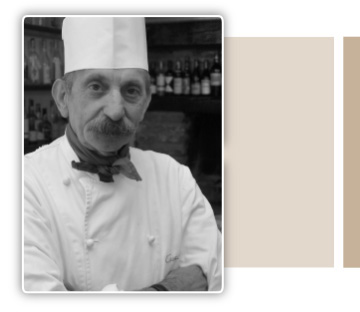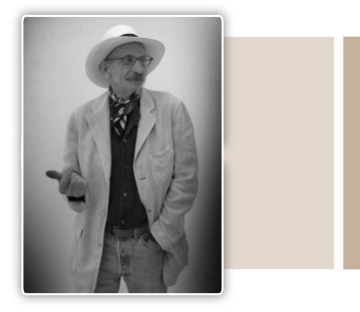CESARE GIACCONE
CESARE’S PASSION
FOR HIS JOB
AND HIS PERSONAL
INTEREST IN THE
PRODUCTS
HE SELECTS.
|
|
Cesare was born in Albaretto della Torre and still lives there. Cesare is Albaretto: you can’t understand one without knowing the other. Albaretto della Torre is a small village in the Langhe, 22 kilometres from Alba. A tiny village (262 inhabitants), two rows of buildings stretching along the ridge of a hill: on one side the Red Cross, some old houses, the new Town Hall and the school of Cesare’s childhood; opposite, the parish church of San Sebastian, another old church (now used as a hall for art exhibitions and public celebrations) and – as is common in this area – the medieval Tower. This tower – square and made of bricks – is one of only a few which have survived the injuries of time and history; in days gone by they were used as lookouts for the Saracen pirates who came along the Ligurian valleys to loot the wine, cattle, and women of the region.
You can get to Albaretto della Torre either by driving there from Dogliani, then through Cissone, Roddino and Pedaggera; on a sharp bend on this steep road there used to be three old overhanging pear trees. Or from Gallo Grinzane and the Talloria valley you can follow a narrow, winding road, where in winter nights the fog is so thick you can hardly see the illuminated signs, and you slowly follow them as they twinkle faintly as if in a white cloud. From Alba you approach through Rodello and Tre Cunei along the road heading to Bossalasco. This is the route taken by those guests of Cesare’s who come from far afield (Milan, Veneto, Florence or even Austria and Germany) puzzling the local inhabitants, who wonder why so many people are willing to go on such a long and difficult journey to reach a village on the edge of the world.
Cesare’s family already ran a restaurant (also a food shop), “Ostereria dei Cacciatori”, opened by his father Filippo before World War II. His wife Maria was an excellent cook who had previously worked in an admiral’s household. When she married Filippo in 1942 she began to make delicious pasta (tagliatelle), coniglio alla cacciatora (rabbit in red wine sauce), mushrooms and fritto misto (different kinds of meat and vegetables fried in crispy breadcrumbs), minestrone (a kind of vegetable soup), and many other traditional dishes for the men of the village who came to eat, or simply to drink a glass of wine and chat.
But Cesare, like many true langhetti (those born in the Langhe) left Albaretto several times: when still a child he went away as a mason, as a boy he also worked as a dishwasher and assistant cook. He travelled all around Italy, learning his job under the supervision of famous chefs and testing his ideas in different restaurants.
Also like many true langhetti, Cesare always came back to Albaretto only to leave again and return once more. At the end of 1969 he remained there to realise his dream: offering – right in his village – a cuisine rooted in his surroundings, working with the unique products he remembered from his childhood, which are in his genes (“You can’t forget the Langhe,” Pavese wrote.)
Now Cesare has revived a family tradition, remembered from childhood. After working in many different towns and cities (in Piedmont, Lombardy, Liguria and Veneto, also in Florence in a restaurant of his own), he has returned to Albaretto to open his new “Bottega Ristorante”. His aim is to renew those flavours, aromas and colours with which the Langhe have always blessed their meat and their fruit ripened under the sun and close to the vineyards; their hazelnuts and chestnuts; their mushrooms. These tastes blend and merge with the fruity bouquet of Dolcetto wine and stronger Barolo and Barbaresco, with notes of violet, rosehip and liquorice.
In the same rooms where Cesare worked for many years – 12, Via Umberto – now hangs the sign “Filippo Oste in Albaretto”: it is Cesare’s son’s restaurant, a new Filippo Giaccone, who in his turn takes up the family tradition and keeps it alive. |

 |
| |
|
|
|
| CESARE'S BOOKS |
|
In Cesare’s Restaurant there are books everywhere: on the tables in the garden, on the shelves along the walls, on chairs, on the desks in the painting studio, in a huge chestnut bookcase in the hall. Books of all kinds are everywhere: wine and food guides, Le Grand Livre de Cuisine by Alain Ducasse, a big recipe book by Carnacina together with books on wines from all over the world and texts about the Langhe, precious volumes of poetry printed by Enrico Tallone from Alpignano, and books on painting, drawing, the Impressionists, Van Gogh, and Pinot Gallizio.
Cesare is always in their company. When he goes somewhere, he puts some into his car and lets them travel with him to show them to his friends; he often asks his guests to read some pages for him (despite his knowing them by heart), or to leaf through them to comment on the pictures or the author. Many of these books also tell stories about Cesare; they describe his recipes and his menus, and try to describe his tastes and his inventions, to immortalise his gestures. Here are some of them:
• Willsberger Johann, Etoiles, Editions Willsberger, Zürich, 1982
• Schmitt Adalbert, Müller Dieter, Könige der Langhe – Essen und Wein in Piemont, Kunze und Partner, Mainz, 1982;
• Bocca Giorgio, (pictures by Gian Paolo Cavallero), La Langa oggi, Edizioni Omega, Torino, 1984
• Boardman Richard W., (photographs by Johann Willsberger), L’Orrido Botri; L’Orrido Botri II – In cucina; L’Orrido Botri III – L’aceto; Nuova Stamperia Parenti, Firenze, 1992, 1994, 1996
• Steingarten Jeffrey, The Man who Ate Everything, Vintage Books, New York, 1997
• Willinger Faith, Eating in Italy. A Traveler’s Guide to the Hidden Gastronomic Pleasures of Northern Italy, Harper Collins Publishers, London, 1998
• Meuth Martina, Neuner-Duttenhofer Bernd, Piemont und Aosta-Tal Küche, Land und Leute, E. Bassermann, München, 2002
• Sugliano Luigi, Murialdo Bruno, Dietro la collina – storie, strade e pietre tra Langhe e Roero, Sorì Edizioni, Piobesi d’Alba, 2003
• Sugliano Luigi, Murialdo Bruno, Cesare e le Alte Langhe, Sorì Edizioni, Piobesi d’Alba, 2005
• Gallo Gianni, Quattro ricette per Robert (De Niro), Edizioni Tallone, Alpignano, 2007
• Vada Rita, “Un cuoco geniale di nome Cesare”, in Langhe Cultura e Territorio, Edizioni ArabAFenice, n.4 settembre 2010
• Giaccone Cesare, Murialdo Bruno, La favola nel piatto-A Plateful of Fables, Edizioni ArabAFenice, Boves, 2012 |
|
|
